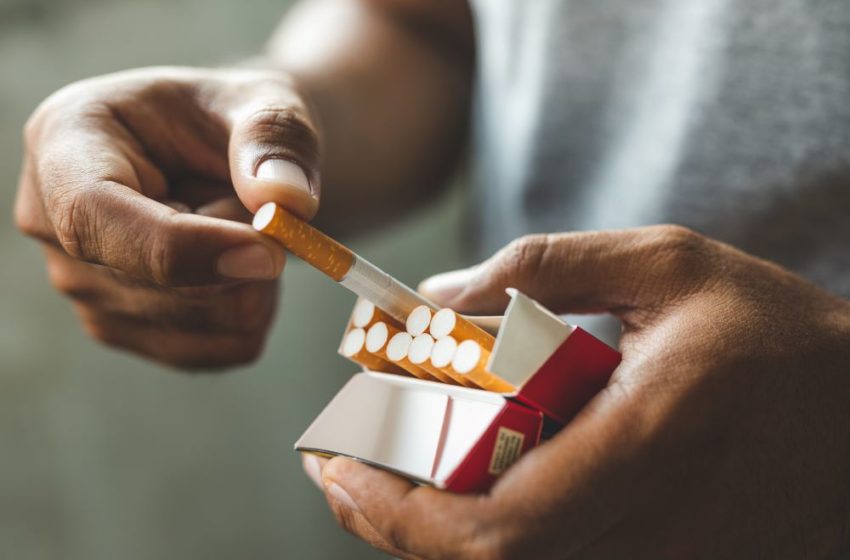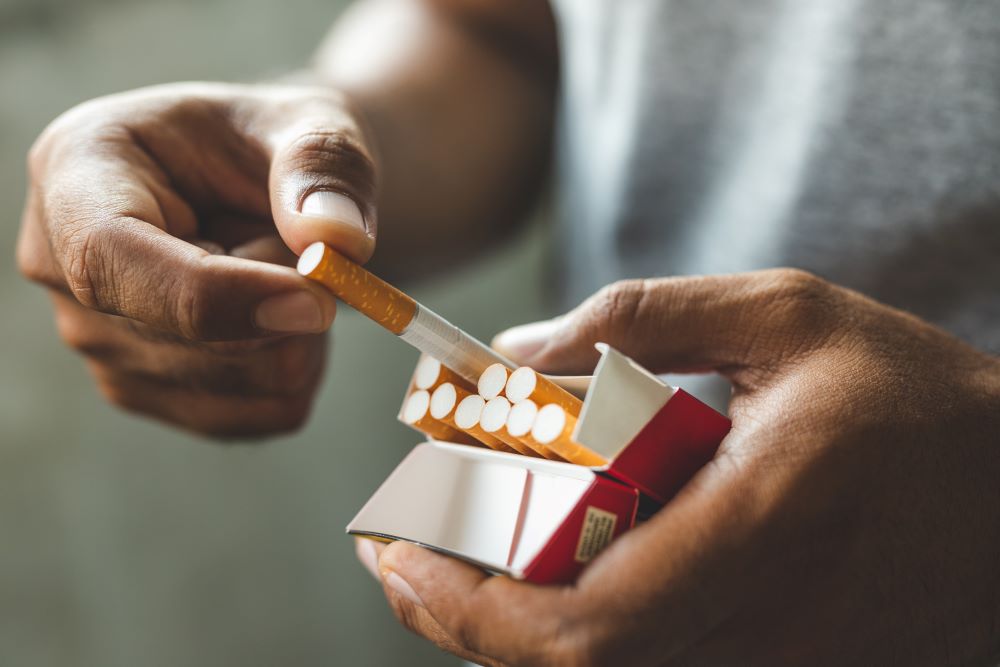Differential Progress
- Also in TR Print Edition
- November 1, 2022
- 0
- 11 minutes read

Photo: Nopphon

Will the valuable insights revealed in the Tobacco Transformation Index accelerate tobacco harm reduction?
By George Gay
The second biennial report on the Tobacco Transformation Index (TTI), which details the findings of two further years of research into the efforts made by the world’s 15 largest tobacco companies to reduce the harm caused by the consumption of their products, was launched at the recently staged GTNF. The 140-page 2022 report evaluates tobacco companies’ actions across six business functions, designated “categories” and 35 underlying indicators that are said to cover “measures indicative of harm reduction ….”
Of the 15 tobacco companies examined, three are state controlled, nine are publicly traded (including Egypt’s Eastern Co., in which the government owns a majority stake), and three are privately held. Together, they are said to account for about 90 percent of global tobacco product volume sales. The geographical sweep of the index takes in 36 countries spread across the globe and accounting for about 85 percent of the global population of adult smokers.

The report contains a huge amount of information, clearly presented and backed with a statistical methodology that aims for transparency and, despite its robust nature, is open to review. The global nicotine and tobacco investment analyst and consultant Erik Bloomquist, who is chairman of the TTI’s technical committee, said during the GTNF investor panel, which he chaired, that everybody should be visiting the TTI website because it contained a “fantastic” amount of “incredibly valuable” information.
Meanwhile, a press note issued on Sept. 28 by the TTI, which is a Foundation for a Smoke-Free World* initiative and whose research partner is Euromonitor International, said research had demonstrated “differential progress toward harm reduction across the 15 largest tobacco companies,” and highlighted:
- That high-risk products made up about 95 percent of retail sales volume across the 15 largest tobacco companies during 2021, with reduced-risk products (RRPs) making up 5 percent;
- That tobacco harm reduction (THR) momentum was developing across a subset of the 15 companies, albeit to varying degrees; and
- That with companies having been analyzed across the six categories and 35 indicators on their actions to reduce the harm caused by tobacco use, Swedish Match was found to have been making the most relative progress.
The press note went on to list the following takeaways from the 2022 index findings:
- “Only Swedish Match sells a greater volume of RRPs than substantially more harmful combustibles, due in most part to the popularity of its snus in Sweden and nontobacco nicotine pouches in the U.S. …
- “Four index companies directed the majority of capital and R&D investments toward RRPs. In addition, five index companies, including three state-owned entities, made incremental investments or early indications of movement toward future production of RRPs during the review period.
- “However, tobacco companies are … failing to invest in harm reduction in low-[income] and middle-income countries, with the vast majority of sales for their RRPs concentrated in markets with the highest disposable income. Notably, RRPs are banned in a number of countries around the world.”
For those who like lists, the 2022 index’s overall scores set the companies’ relative rankings as follows, with their 2020 relative rankings in parenthesis: Swedish Match 1 (1), Philip Morris International 2 (2), Altria Group 3 (4), BAT 4 (3), Imperial Brands 5 (5), Japan Tobacco Group 6 (6), KT&G Corp. 7 (7), Swisher 8 (8), ITC 9 (9), China National Tobacco Corp. 10 (10), Vietnam National Tobacco Corp. 11 (12), Tobacco Authority of Thailand 12 (11), Eastern Co. 13 (13), Gudang Garam 14 (14) and Djarum 15 (15).
As can be seen, there was little shifting of positions, but the devil is in the details, and there was more relative movement in each of the six categories that were researched: strategy and management, product offer, product sales, marketing policy and compliance, capital allocation and expenditure, and lobbying and advocacy. And this differentiation is seen as important, though, in fairness, it has to be set against any number of factors, some of which, such as portfolios, companies have control over, and in respect of some of which, such as regulations, they are largely at the mercy of outside forces, especially those companies operating mainly in countries that ban RRPs. And there are some factors that might be seen as sitting in between. Increases in sales of higher risk products, for instance, are seen as negatives.
Sense of Proportion
The report clearly has some important information, which is likely to become even more valuable in the future if, as seems likely, more of the 15 companies engage with the TTI. Six companies, mainly the multinationals, provided feedback in respect of the 2022 report.
Nevertheless, I have reservations about what is going on here. Glancing through the minutiae of the huge report and the 84-page methodology that defines the way the report’s data is arrived at, I couldn’t help wondering whether we weren’t in danger of losing our sense of proportion, even losing track of our objectives. To a large extent, tobacco transformation is pushing at an open door because consumers undoubtedly want the choices that new-generation products offer, and the business case is compelling.

But what truly concerned me as somebody living in a country whose economy is being systematically tanked by the last remaining devotees of trickle-down economics was that the TTI seemed to be embracing trickle-down THR. For instance, the TTI was described in the Sept. 28 press note as having been created “to accelerate the reduction of harm caused by tobacco use by ranking the world’s 15 largest tobacco companies on their relative progress or the lack thereof.” From ranking tobacco companies in this way to accelerating THR sounds to me like a bit of a stretch. Certainly, it seems to beat something of an indirect path toward THR.
In fairness, though, I should say that the TTI program officer, David Janazzo, in his insights introduction to the 2022 report, added that part of the purpose of the index was “to inform the public about the activities of the tobacco industry that influence achieving a smoke-free world.” Such an undertaking, if it could be achieved, would certainly have a more direct influence. But I don’t see that happening. The report talks of “stakeholders,” but that term is not defined, and whereas, as far as I have been told, it potentially includes everybody, such a claim to inclusivity falls a little flat if you try to imagine smokers around the world engaging with a 140-page report and an 84-page methodology. Unsurprisingly, currently, stakeholders are largely confined to tobacco/nicotine companies, researchers and investors.
Relative Rankings
The TTI throws up a number of oddities, not the least of which has to do with the understandable decision to compare the 15 largest tobacco companies. Gudang Garam against BAT seems to be a total mismatch, and, given that the index is aimed at informing, in large part, potential investors, the presence of companies that are not publicly traded, though understandable from a nudge theory standpoint, nevertheless looks strange. PMI was said in the press note to be ranked second in the 2022 index and Djarum last, and while I understand that this is how the index’s methodology sees the tobacco world, I have to ask, is this a fair reflection of tobacco harm? If you constructed an index that ranked companies on the number of people worldwide who currently were harmed by consuming those companies’ products, I would guess that Djarum would move up the rankings.
It was disappointing, in my view, that the 2022 report did not cover the environmental credentials of the RRPs on offer, either relative to each other or relative to the higher risk combustible cigarettes they are supposed to replace, though I understand such matters might be covered in the third iteration of the report, which is due out in 2024. RRPs are supposed to comprise a disruptive technology and, if disruptive means anything, it surely means speedy. Is it wise to wait so long for such information to trickle down? We have on the one hand a problem with the diseases caused to individual smokers, which are tragic on an individual basis but contained, and, on the other hand, an existential environmental crisis enveloping everybody, and we seemingly choose to try to fix the first problem and not the second.
Timing is important, and one of the main weaknesses of the TTI seems to be its two-year time frame. The 2022 report took in research through the end of 2021 while the next report is due out in 2024, so this suggests that, unless interim updated TTI reports are issued, the publication schedule is going to provide a three-year drag on the incorporation of anything of significance that occurred in early 2022.
To my way of thinking, the commitment to THR is driven and will be driven by regulations and taxes, and one benefit of the index is that it might influence governments in these areas. And this is important. Taxes are currently set in some jurisdictions so that some RRPs attract revenues much greater than those of combustible cigarettes, and investors are clearly going to put pressure on companies to transform their portfolios while the profits generated by the sale of RRPs are higher than those from the sale of combustible cigarettes. Of course, you would have to be terribly naive to imagine that those same investors would keep up the pressure if the profit advantage were wiped out. There is nothing wrong with this if you believe that the market should be the ultimate arbiter of what is good, though one has to accept, too, that things might head in the other direction.
Finally, I would be concerned that the cynics will have a field day because while the TTI is listed as an initiative of the foundation, in my view, it is not spelled out prominently enough where the foundation’s money comes from: PMI. Despite the fact that the foundation is independent, those cynics will see that the number two company on the list is PMI, which is possibly about to acquire the number one company and move into the number one spot. All above board, I’m sure, but these things have to be seen from the point of view of those with different agendas.
My argument is not that the application of trickle-down THR would be socially destructive in the way that trickle-down economics has been but that it would be slow and there would be more efficacious ways of approaching THR. Why spend the foundation’s money carrying out research that is going to benefit mostly analysts, banks and pension funds that have the resources to carry out such research on their own behalf? Surely, the money should be spent on projects that will more directly help smokers. Even helicopter THR might be preferable to trickle-down THR.
*The Foundation for a Smoke-Free World is an independent nonprofit organization created in 2017 with the mission to end smoking within this generation.

